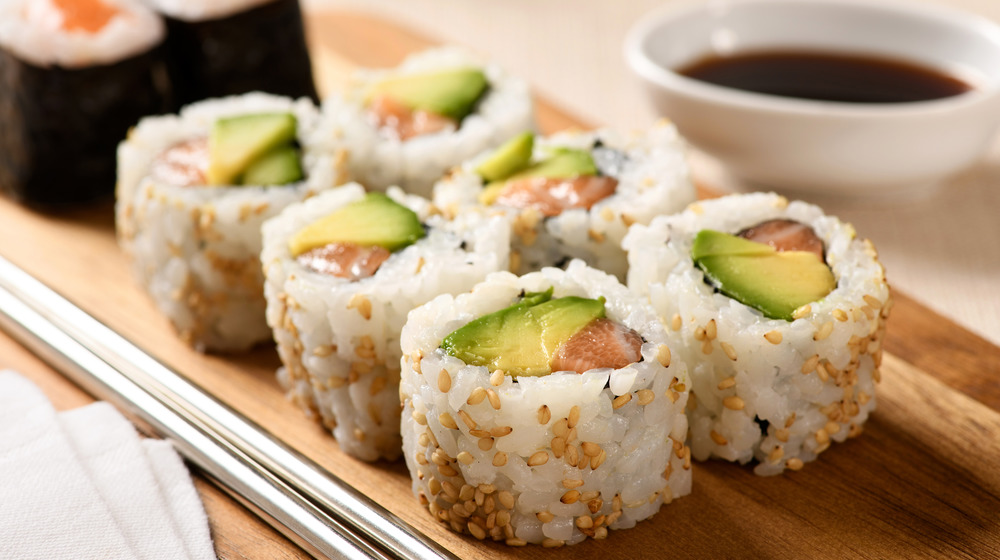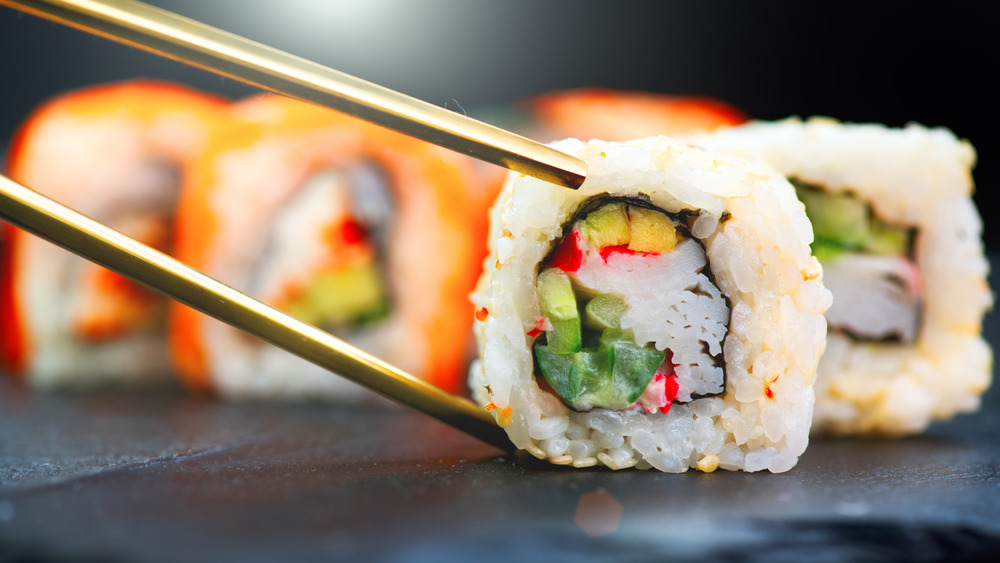Why You Should Avoid Inside-Out Sushi Rolls
Everyone who loves sushi has a go-to order. Maybe it's the classic California roll, with its creamy avocado and crab combo. Maybe it's a refreshing cucumber roll, for those looking for something plant-based and lighter. Or maybe it's the spicy tuna roll, with a little bit of a kick at the end. While each of the above rolls are unique in flavor and ingredients, they all have one thing in common: They're all technically uramaki rolls.
Also called an inside-out sushi roll, the uramaki roll describes almost every roll found at sushi restaurants in the United States. Essentially, it's any roll where the rice is on the outside. According to Matsuhisa Restaurants, this was a trend that started back in the 1960s when Americans complained about the texture of the seaweed commonly wrapped around sushi rolls. While there's no denying that uramaki rolls are delicious, they might not be the best thing to order the next time you're getting takeout. Here's why.
You're probably getting ripped off
Inside-out sushi rolls may have been invented to disguise the slimy texture of seaweed, but there's also a benefit of uramaki rolls for sushi restaurants (which happens to be a downside for customers): They're cheaper to produce. This means that you could be way over-paying for your California roll on your bill. Yikes.
In an interview with First We Feast, sushi chef John Daley explained why this happens. "When rice is put on the outside, you can use more rice. Rice is cheaper than fish, so they put rice on the outside to fill you up. There's more rice and the filler uses less fish," he said.
Uramaki rolls are also a way for chefs to disguise lower-quality ingredients inside. Bloomberg cautions that imitation meat or less fresh veggies and fish can be hidden more easily in these rolls, covered up by the rice.

